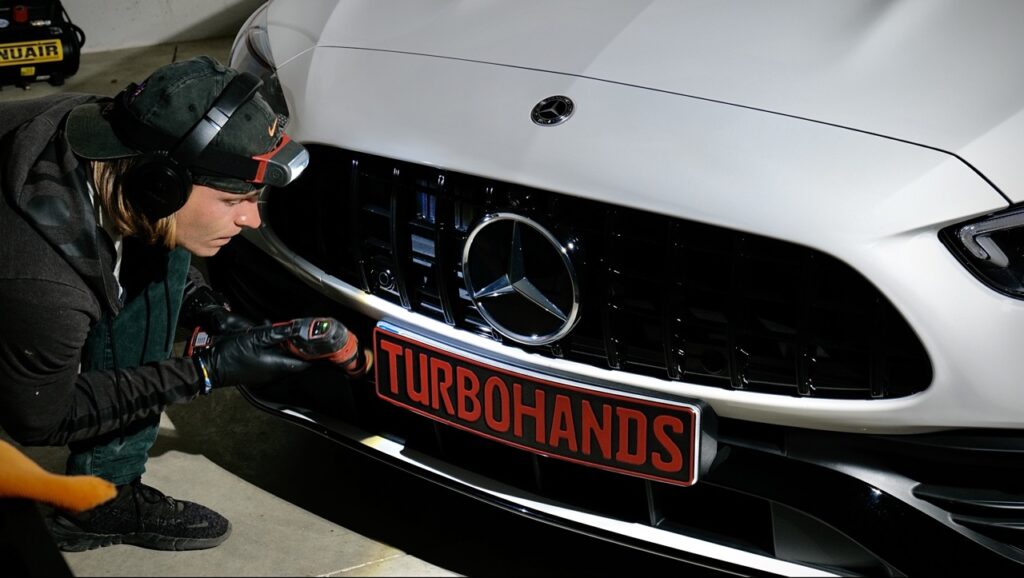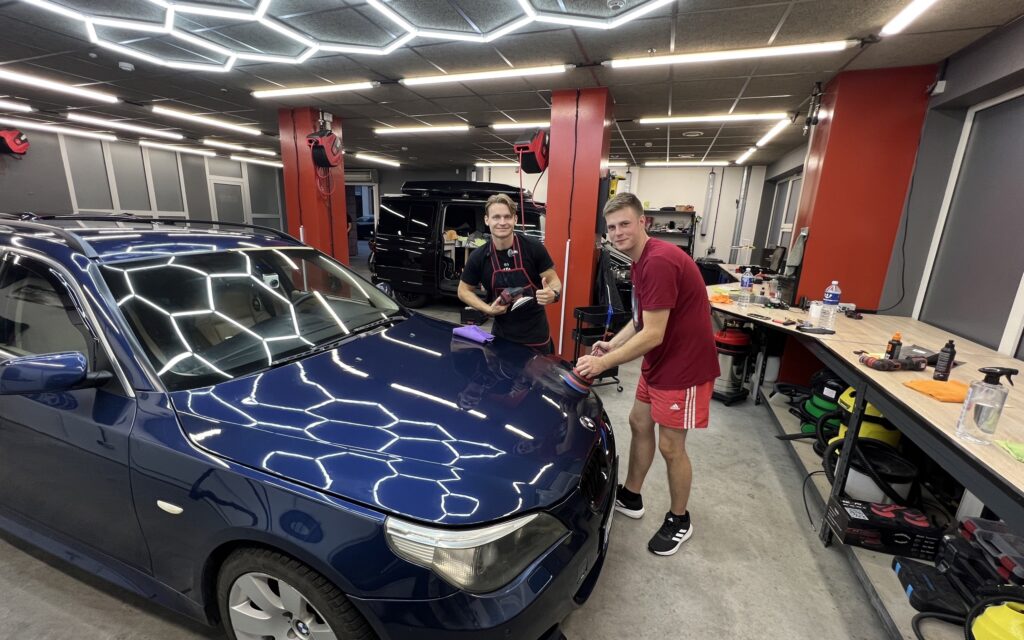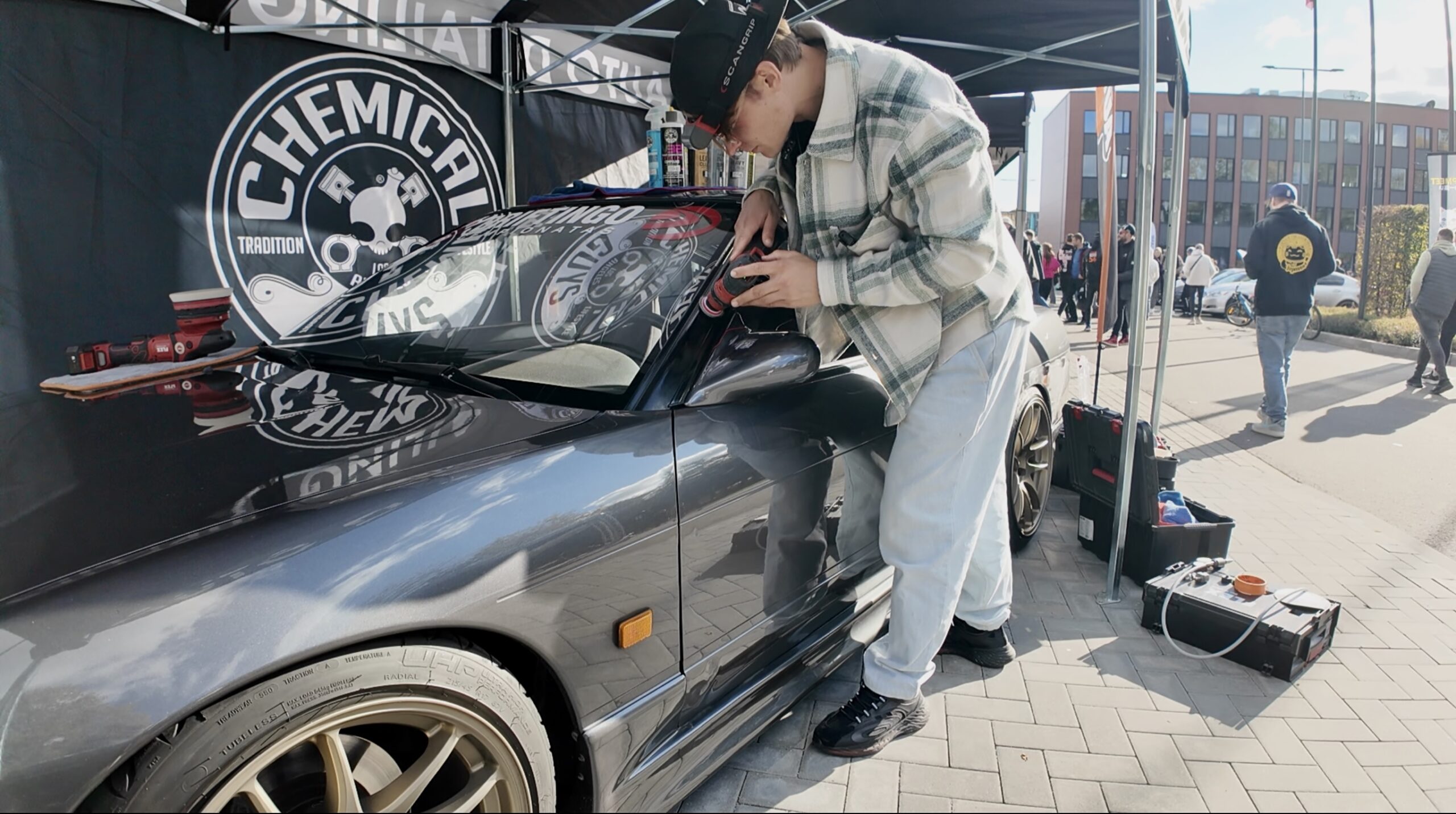Let’s start with the basics. In this article, I’ll walk you through how your first serious polishing session should look – no complicated theory, just real-world tips from hands-on experience. I want to explain it the way I wish someone had explained it to me in the beginning – no technical jargon, no unnecessary theory. Just the stuff you need to know.
1. Proper Surface Prep – Don’t Even Think About Skipping This
A lot of people make the mistake of washing their car with some shampoo, drying it off, and thinking it’s ready to polish. Sorry – not even close. The surface has to be perfectly clean – not just dirt-free, but free of things you can’t even see.
You’ll need to remove:
- Iron particles – mostly from brake dust, embedded in the clear coat.
- Tar – from trees or road grime.
- Bug remains, salt, limescale – they cling on like glue.
- Old waxes and sealants – so new products can work effectively.
Here’s how you do it in a simple, not professional way, step by step:
- Start with a cold water rinse. Especially if the car is hot. Only then, spray the car shampoo or pre-wash on all surfaces, but don’t touch the car with the sponge yet. The pre-wash softens and lifts dirt from the surface, making it easier to wash off later without scratching the paint.
- Wash the car thoroughly with pressure or hose water. It is important to wash off as much dirt as possible before touching the surface with a cloth or sponge.
- Spray the car with soap again. Take a sponge or microfiber cloth and a soft-bristle brush and wet clean all car surfaces.
- Use a clay bar or clay mitt and some lubricating water (shampoo or soapy water). Clay bar treatment “grabs” hidden contaminants. This step is essential if you want the polishing pad to glide properly. Rub the paintwork consistently everywhere until it becomes slippery or 5 – 8 passes over the same area. This step is very effective, but since there is still a lot of residue on the car, you can easily scratch the paint while removing the contaminants. Therefore, this step can only be done before polishing. But it really helps for good polishing results.
- Rinse and dry the car with a microfiber drying towel thoroughly.
- Mask naked plastic and rubber with masking tape. Because the polishing step can damage the unvarnished surface.
Here’s how you do it PROFESSIONAL way step by step:
- Start with a cold water rinse. Then spray pre-wash who softens and lifts dirt from the surface, making it easier to wash off later without scratching the paint.
- Wash the car thoroughly with pressure water. It is important to wash off as much dirt as possible before touching the surface with a cloth or sponge.
- Use the two-bucket method with a pH-neutral shampoo. One bucket with shampoo, the other with clean water for rinsing. This will reduce the risk of scratching the surface.
- Spray an iron remover on wheels, car sides and rear trunk doors. It helps remove brake dust and other metal particles that may have embedded in the paint. After 5-8min rinse it off.
- Apply a tar remover. Especially if you drive a lot on highways or in the city, tar sticks to sills, arches, and bumpers. After 5-8 min, rinse it off.
- Use an insect residue remover. Useful in the summer – helps to safely remove embedded organic residues. Only car front, mirrors, front glass, bumper, and bonnet. After 5-8 minutes, rinse it off.
- Use a clay bar or clay mitt. This is the final step before polishing – it removes invisible particles from the paint, preparing the surface for a perfect result.
- Rinse and dry the car thoroughly.
- Mask “naked” unpainted plastic and rubber with masking tape. Because the polishing step can damage the unvarnished surface.
You’ll know you’re done when the paint feels smooth to the touch, even with your eyes closed.

What Gear You’ll Need
1. The polishing machine. Professionals use 3-4 types of machines, but you can achieve good results with just one machine.
If you don’t have one yet, go with a Dual Action (DA) polisher. It’s forgiving and won’t burn through your clear coat like a rotary polisher can. Rotary machines are more powerful, but they’re risky if you’re new – one wrong move and you’re left with holograms or even damaged paint.
2. Polishing pads.
Pads differ not only in size but also in firmness. There are firm pads for heavy cutting, medium ones for correction, and soft ones for finishing. For starters, just get one medium and one soft pad. That’s enough.
3. The polish.
No need to grab a whole lineup of compounds. You’ll be just fine with an All-in-One polish – it’s gentle but delivers solid results. Perfect for your first go.
4. Microfiber towels.
Don’t underestimate this. A bad towel can ruin everything. Go for soft, thick, high-quality microfiber. It really makes a difference.
How It All Goes Down – Step by Step
Next, pick a small section to start with – about half a square meter. Dab a bit of polish on the pad, place it gently on the panel, then turn the machine on. Never the other way around. Work in straight, overlapping passes – first up-and-down, then left-to-right. Don’t press too hard. Enough pressure so the pad makes contact, but not so much that it’s bending.
Do 2–3 passes. Then stop, wipe it clean, and check the result. If needed, repeat. When you’re happy with the correction, switch to a soft pad and finishing polish to really bring out that gloss.

Finish Strong – Protect Your Work
Once you’re done, it’s crucial to protect the paint. If you can – apply a ceramic coating. If that’s too much, go for a sealant or a good wax. This locks in the results and shields your paint from sun, dirt, and weather.
Common Mistakes to Avoid
Too much polish – classic rookie move. People think more is better. Nope. Just 3–4 pea-sized dots on the pad are enough.
Too much pressure – another killer. You’re not a hydraulic press. Let the pad spin freely. Pressing down too hard ruins everything.
Rushing – big mistake. If you want quick results, you’ll end up with a mess. Polishing takes time, but when done right, the result is a real head-turner.
Where to Start
First, gather what you need. Everything I mentioned, you can find right here:
👉 www.detailerplace.com
Use the code Mobiliosrankos for a special discount. I’ve tested everything with my own hands.
Then, try it out on your own car. Just one panel. One spot. You’ll see how addictive it gets.
And if you enjoy it – I’ll see you in my training. I’ve taken all the experience, all the questions I’ve answered over the years, and put it into a structured video course. Real-world knowledge that’ll help you skip years of trial and error.


